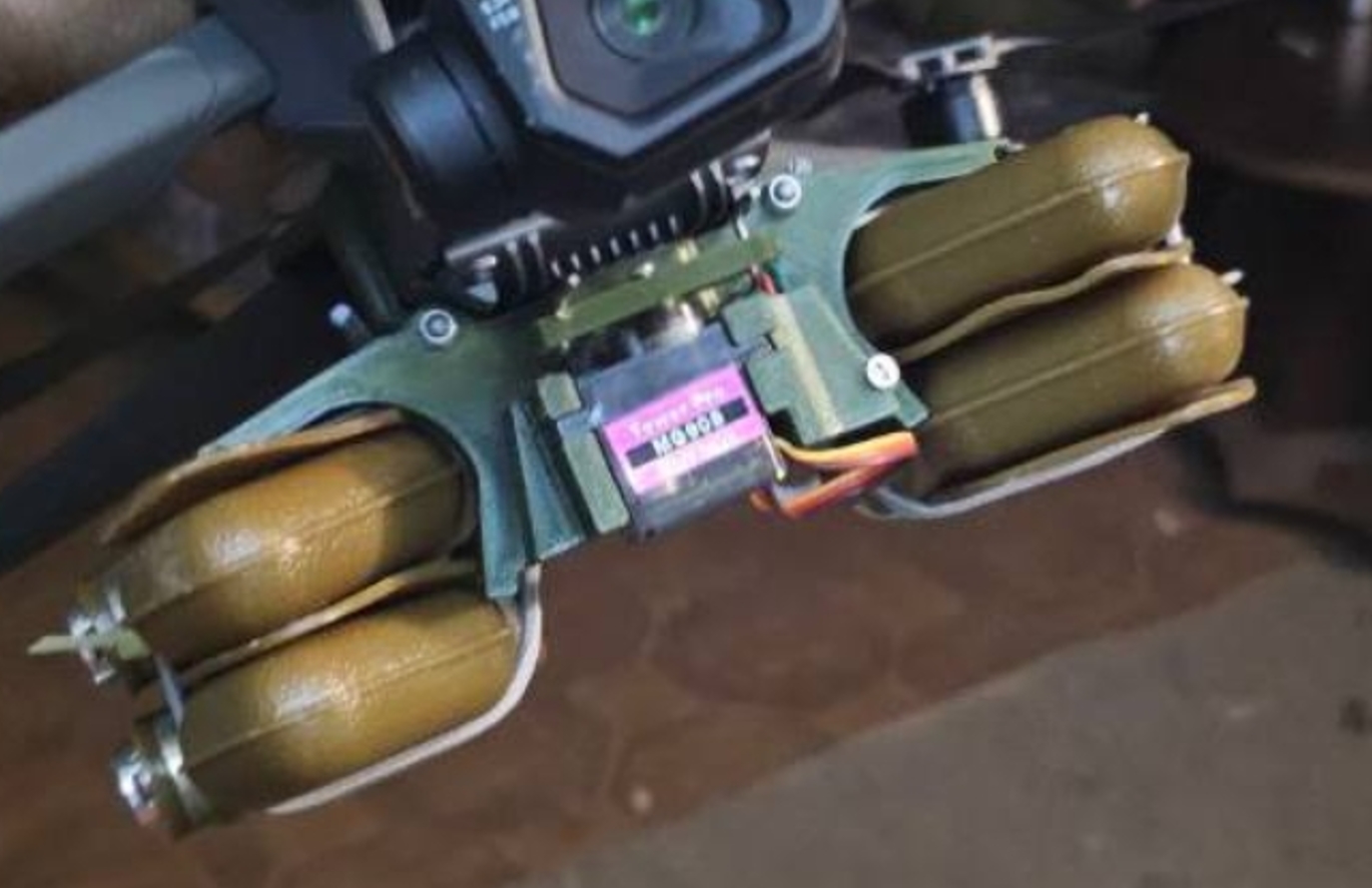Invaders have developed PFM-1 mine dropping system for drones
28 September, 2024 DJI Mavic 3 drone of the Russian military, on which the PFM-1 mine dropping system was installed.
2024. Source: Serhiy Flash The invasion forces have started using drones that have received the PFM-1 anti-personnel mine dropping system.
A photo of such a Russian drone was shown by radio technology specialist Serhiy Flesh. The DJI Mavic 3 drone was equipped with the anti-personnel mine drop system, which is now capable of dropping at least 4 PFM-1 mines. The cassette contains pairs of PFM-1 mines, which are arranged in pairs when they are fired.
They will not explode for about 5 minutes after being fired because of the retarder. Then, in the fired state, they need to be pressed with a weight of 5 kg or more to detonate.
 DJI Mavic 3 drone of the Russian military, on which the PFM-1 mine dropping system was installed.
DJI Mavic 3 drone of the Russian military, on which the PFM-1 mine dropping system was installed.
2024. Source: Serhiy Flash
Mines can be dropped on the paths of light vehicles. When detonated, they will puncture the wheels of the vehicle.
The Lepestok mine is available in two versions: PFM-1 and PFM-1S. The first version of the mine does not have a self-deactivation device, the second is equipped with a device that ensures the mine's self-deactivation by detonation after 1-40 hours from the moment of installation. The mine's construction is predominantly plastic, with the only metal part being a small aluminum fuse between the two wings.
The mine can only be placed in the ground by remote mining equipment. It is only 61 mm long and only 20 mm wide at the widest part.
 A PFM-1 anti-personnel mine. Photo from open sources
A PFM-1 anti-personnel mine. Photo from open sources
A person can be injured by a mine explosion by damaging the lower part of the leg.
The explosion occurs when a person steps on the mine.
The total weight of the mine is 75 g, of which 37 g is the explosive itself.
 A PFM-1S mine cluster unit
A PFM-1S mine cluster unit
As a reminder, in July, Ukrainian drone operators hit a Russian T-90M and a TOS-1 Solntsepek, dropping TM-62 anti-tank mines on them.